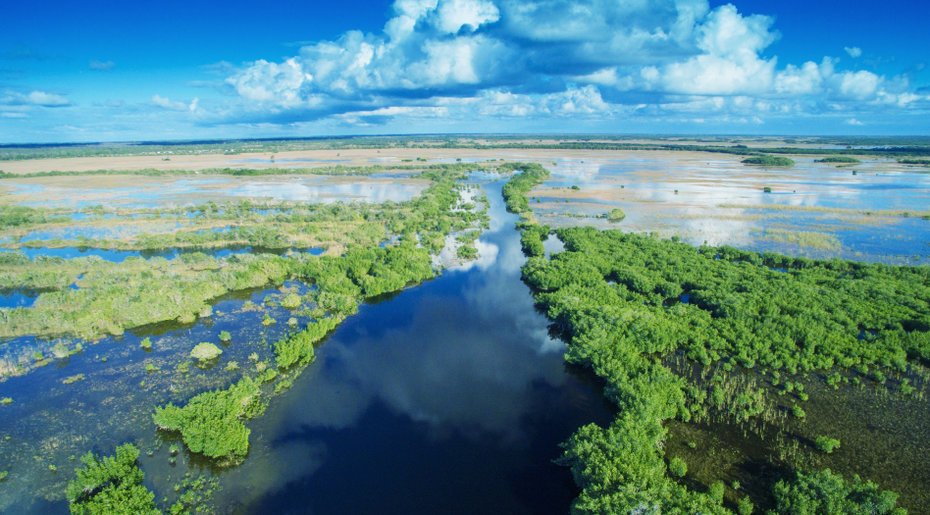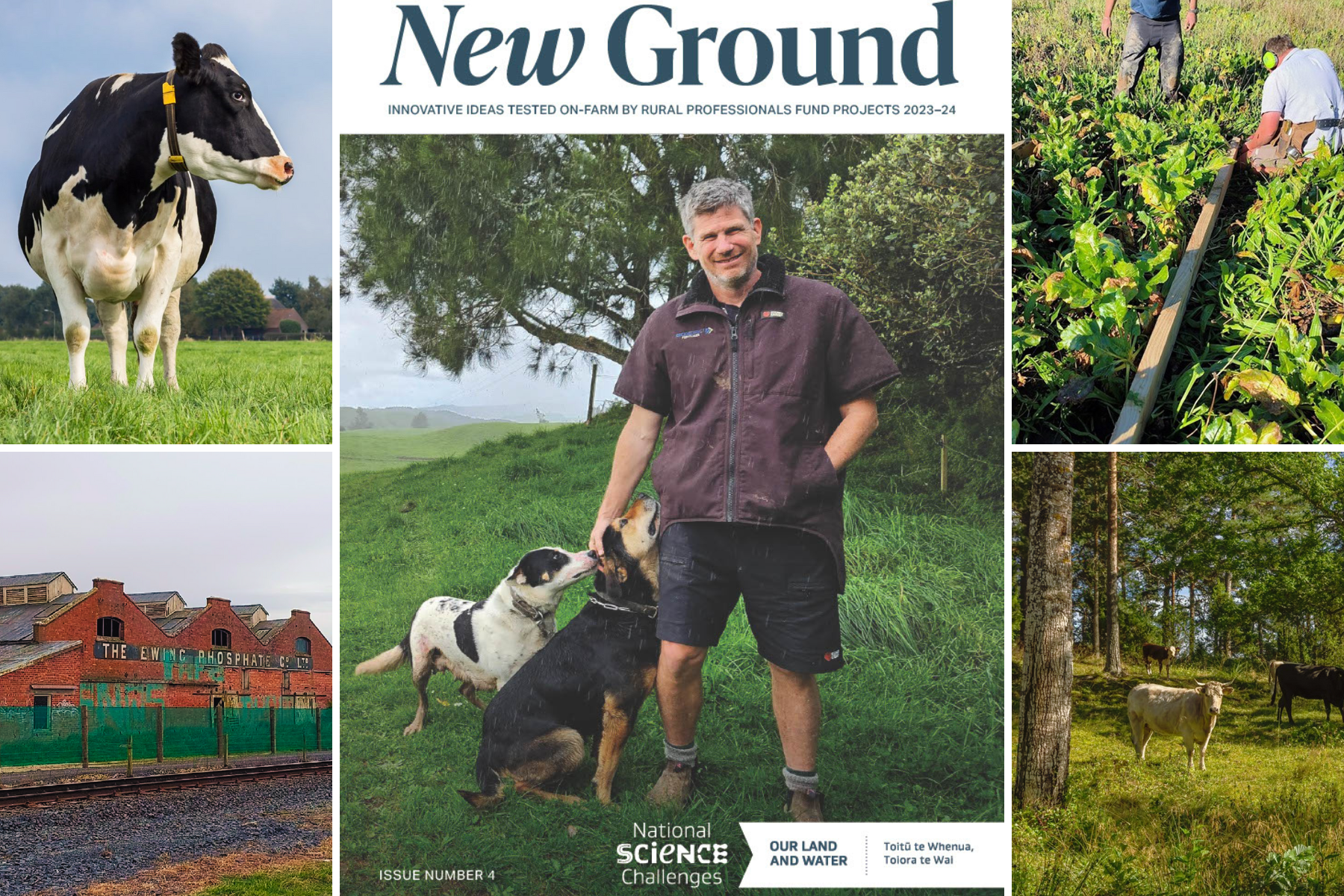How Farmers Worked Together to Protect the Florida Everglades – Five Lessons for New Zealand
Seething with crocodiles, alligators and pythons, the vast wetlands of southern Florida may seem a world away from Aotearoa’s pleasant pastures – but collective action taken by Florida farmers to restore water quality provides important lessons for New Zealand catchment groups.
The United States government sued the state of Florida in 1988 for failing to manage farm runoff that was polluting waters in Everglades National Park, an area of high biodiversity. A negotiated settlement implemented in 1994 required phosphorus concentrations to be reduced by nearly 60% by 2006, from 24 to 10 parts per billion (ppb).
By 2016, concentrations had dropped to a five-year average of 9 ppb. What can we learn from how this was achieved?
A dual strategy to control phosphorus
The Everglades comprise 1.5 million acres (600,000 ha) of wetlands – the largest remaining subtropical wilderness in the United States. Draining into this wilderness is the 300,000 ha Everglades Agricultural Area (EAA), home to Florida’s multibillion-dollar sugar industry (80% of farmed area), along with some vegetable and rice production.
To achieve the stringent water quality targets, the court settlement employed a dual strategy. The first measure: Reduce phosphorus runoff from farms by 25% through adoption of ‘best management practices’ (BMPs). And second: Convert over 14,000 ha of farmland to new stormwater treatment areas, effectively constructed wetlands, to remove additional phosphorus before water flows into the Everglades (EAA farms were taxed to help pay for their construction).
No farm faces individual penalties – as long as an overall 25% reduction is achieved and maintained.
Collective responsibility
Farmer representatives successfully argued for compliance to be assessed for all EAA farms collectively rather than for individual farms, to minimise regulation of farming practices. No farm faces individual penalties – as long as an overall 25% reduction is achieved and maintained.
Collective responsibility for achieving the target has encouraged sharing of information between farmers, regulators, and extension agents. The regulations required each farm to have a BMP plan that targeted (1) fertilizer application, (2) soil erosion, and (3) less frequent operation of drainage pumps that carry sediment through canals. Farms were required to adopt BMPs in each category, but could choose from a list of the BMPs they felt would work best for their farm.
The sugar industry in this area is highly concentrated, which probably made cooperation easier. Two farms, Florida Crystals and US Sugar, together cultivate more than two-thirds of the EAA’s farmland. A third company, the Sugar Cane Growers Cooperative, has 45 member farms and accounts for nearly one-quarter of the EAA.
Cooperation took many forms:
- Farming leaders, scientists and state officials worked together to identify BMPs for each category. This lessened resistance to adoption and mistrust of regulators.
- Group compliance encouraged farmers to talk with one another about BMPs.
- Most pumps affect multiple farms and so required additional cooperation on new pumping regimes.
- Grower organisations hosted regular training sessions, with senior farm managers and executives participating.
- The large farm businesses formed a self-taxing entity to raise funds for shared research. While funds were initially directed at research to examine (and contest) the 10 ppb water quality standard, this entity has subsequently funded research to improve BMP effectiveness.
The result? EAA farms have averaged annual phosphorus loads 55% below their baseline, maintaining compliance every year since 1994. Water quality in the Everglades has improved as a result, with more than 90% of monitoring sites at or below 10 ppb.
Pride and pressure
Farmers noted that the regulations forced them to pay closer attention to their farm management decisions, while the monitoring made water quality relevant and provided valuable feedback on the effectiveness of their decisions. Compelling evidence was provided by the reduction in phosphorus runoff after the first year of regulations, without reduction in crop yields.
Although compliance is determined collectively, a published map of monitoring data enables farmers to recognise their neighbours’ performance and see which farms are contributing the most or least to improving water quality. This encouraged some farmers to seek their neighbour’s advice on reducing runoff.
Farmers and extension agents reported feelings of pride associated with low phosphorus runoff and conversely a concern when phosphorus levels are increasing.
Through their involvement in creating the BMPs, farmers made harmful practices less socially acceptable and collectively redefined what counts as a good farmer.
Through their involvement in creating the BMPs, farmers made harmful practices less socially acceptable and collectively redefined what counts as a good farmer. Allowing farmers to choose from a list of BMPs supported a key aspect of devolving responsibility to farmers – the pride associated with demonstrating one’s skill at farming.
In the EAA, pride and peer pressure were important motivations, alongside other socially acceptable justifications such as reduced costs. Sharing information was a key part of collective action to improve BMP effectiveness to maintain group compliance.

Hot spots
It hasn’t all been smooth sailing. As predicted by environment groups who opposed the group compliance provisions, adoption of BMPs by farmers has been variable, resulting in ‘hot spots’ of high phosphorus concentrations.
Farmers adopted BMPs from the agreed list without necessarily considering whether a chosen BMP was the most appropriate for their farm.
The two large farms and 33 of the co-op farms reduced their phosphorus loads, substantially in many cases, but about one-third of all farms, and 45 out of 173 basins (sub-catchments), have increased their phosphorus runoff. In five basins, phosphorus loads are still more than 3.5 kg/ha, which is higher than the pre-regulation average for the EAA.
Other problems also continue to plague the Everglades: reduced inflow, algal blooms and – luckily less of a concern for Kiwi farmers – invasive Burmese pythons.
There need to be specific reduction targets and local water quality standards, with consequences if these are not achieved
Five lessons for New Zealand
Although the Florida Everglades may seem a world away, there are several things we can learn from how farm runoff has been reduced there:
- Given the opportunity, the right incentives and support, farming groups can motivate adoption of improved practices by changing what it means to be a good farmer. This can achieve substantial improvement in water quality. Involving farming groups in the selection of acceptable practices is important.
- As we saw in the Everglades, just requiring farms to adopt BMPs is unlikely to be enough. There need to be specific reduction targets and local water quality standards, with consequences if these are not achieved.
- To avoid local hot spots and help farmers identify what is and isn’t working, monitoring should be at a local scale – in each sub-catchment, rather than only at the bottom of the catchment.
- Controlling a single contaminant is unlikely to solve complex ecological problems, but it can make an important contribution.
- Catchment groups can help. They can identify and customize appropriate BMPs to local conditions, host training sessions, share information and advice ‘over the fence’, monitor water quality, and help their members address problems early, before they become a compliance issue for the council.
What do you think?
What do you think we can learn from the Florida Everglades? In New Zealand, how would catchment groups respond to this approach, and what roles might tangata whenua play? Leave a comment below and contribute to the conversation!
More information:
- New Models for Collective Responsibility research programme
- Join a webinar on 9 March at 1:30pm: NZ’s Catchment and Biodiversity Groups: Goals, Activities & Needs. Jim Sinner and Marc Tadaki of Cawthron will present the findings of an MfE survey of New Zealand catchment and biodiversity groups, to help understand the nature of local groups, what they are doing and what kinds of support they need. The presentation will include recommendations for government, and an official from MFE will comment on how they will use the report. There will be ample time for questions. Register here.
- Yoder, L. 2019. Compelling collective action: Does a shared pollution cap incentivize farmer cooperation to restore water quality? International Journal of the Commons Vol. 13 Issue 1
- South Florida Water Management District, Water quality improvement webpage
Author
 View Our Strategy Document 2019 – 2024
View Our Strategy Document 2019 – 2024




3 Comments
Managing water quality at a catchment level makes a whole lot of sense to me, we have just formed a stream care group for the Pokaiwhenua catchment including a corporate farmer with 20 dairy farms. The problem is lack of cohesive monitoring and a completely fragmented regulatory regime. Central Government seem to set the standards through loudly trumpeted NPS statements. Regional government manage prosecutions for effluent but seem to be completely buried in an endless round of “Plan changes” which farmers have grown weary and wary of. Local government keep poking their noses in with things like SNA’s (significant natural areas) which need to be accounted for in any catchment plan. It’s like having three referees in a rugby match. Will someone stand up and tell us which one we’re supposed to listen to?
Hi Jim, interesting study, thanks for posting it.
I found it quite surprising that 45 out of 173 basins (26%) increased rather than reduced their P load (ie. free-riding) & on first reading that distracted me a bit from the headline message that the catchment overall achieved its targets. I do think it’s a useful example to reflect on for the NZ context & I’d certainly encourage you to highlight more international stories, as it helps people here in NZ to realise that they’re not be asked to do things that people in other countries aren’t.
Overall, I’m a strong supporter of collective action and agree that it needs to be accompanied by clear targets (provided they align reasonably with real ecosystem health). What gets measured gets managed, I think the Everglades is a perfect example of that – compliance at the level of overall accountability & somewhat variable response (human nature?) elsewhere.
How would catchment groups respond to this approach? – As I see the rollout of freshwater farm plans, takiwā/FMUs and catchment contexts, it seems to me this is exactly the direction NZ is heading. Which is a good thing in my mind but does raise a question about free-riding. A more granular/nested approach to limit-setting would reduce the risk of free-riders – although whether we need to be as granular as individual property output limits set by eg. Overseer is debatable. I’d like to think that we have a more collaborative and collectivist ethos in the NZ farming community cf. the US, so free-riding might not be such a big issue here (but of course there will always be outliers).
What role might tangata whenua might play? – Firstly, setting long-term values & and attribute target states in a co-governance setting that catchment groups actively inform through their own catchment group plans. Secondly, working actively with catchment groups (as an efficient method of communicating directly to multiple landowners) to blend mātauranga with farmer knowledge and western science in achieving desired outcomes (especially but not exclusively in the biodiversity/biosecurity space). Thirdly, in adding value to products through enhanced ecological integrity of the improved system.
Thanks Xan, great to hear others’ thoughts on this. I wondered if it was the 2 very large farms’ involvement that may have encouraged free-riding. Perhaps a sense from smaller farmers that it’s easier/less risky for the corporate farms, so the ‘little guys’ shouldn’t have to do as much? In NZ, more of our farmers are in similar situations and may be more likely to know each other in person, which may avoid this sort of rationalisation – but perhaps in catchments where there are very intense, large or overseas-owned operations we might see the same attitude? Or perhaps where there is a large government-owned (Pāmu) farm? Interesting to think about the psychology of it!